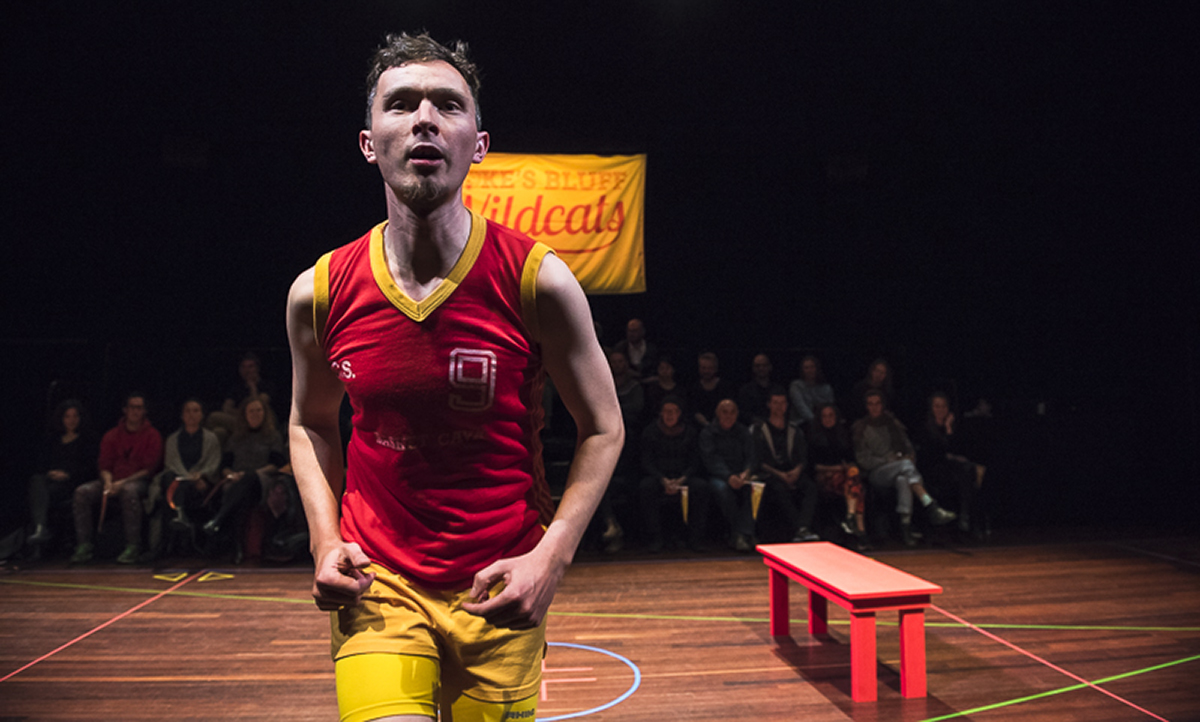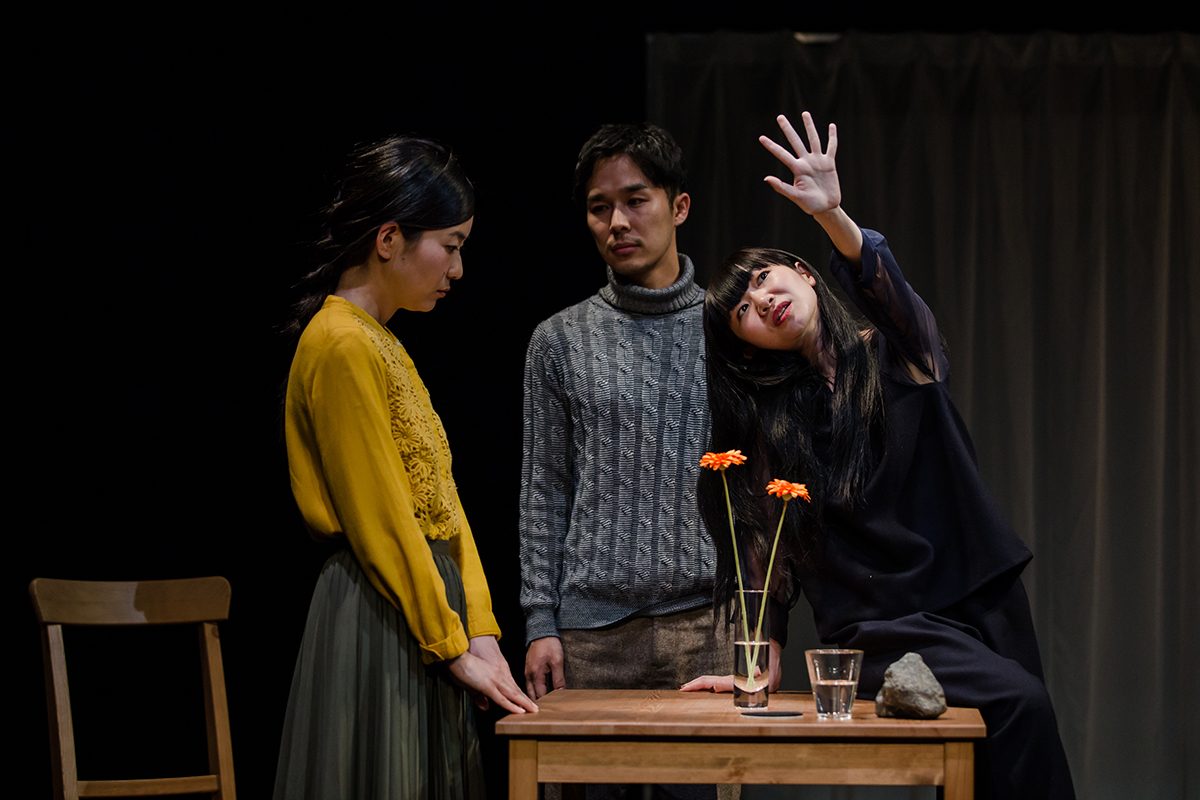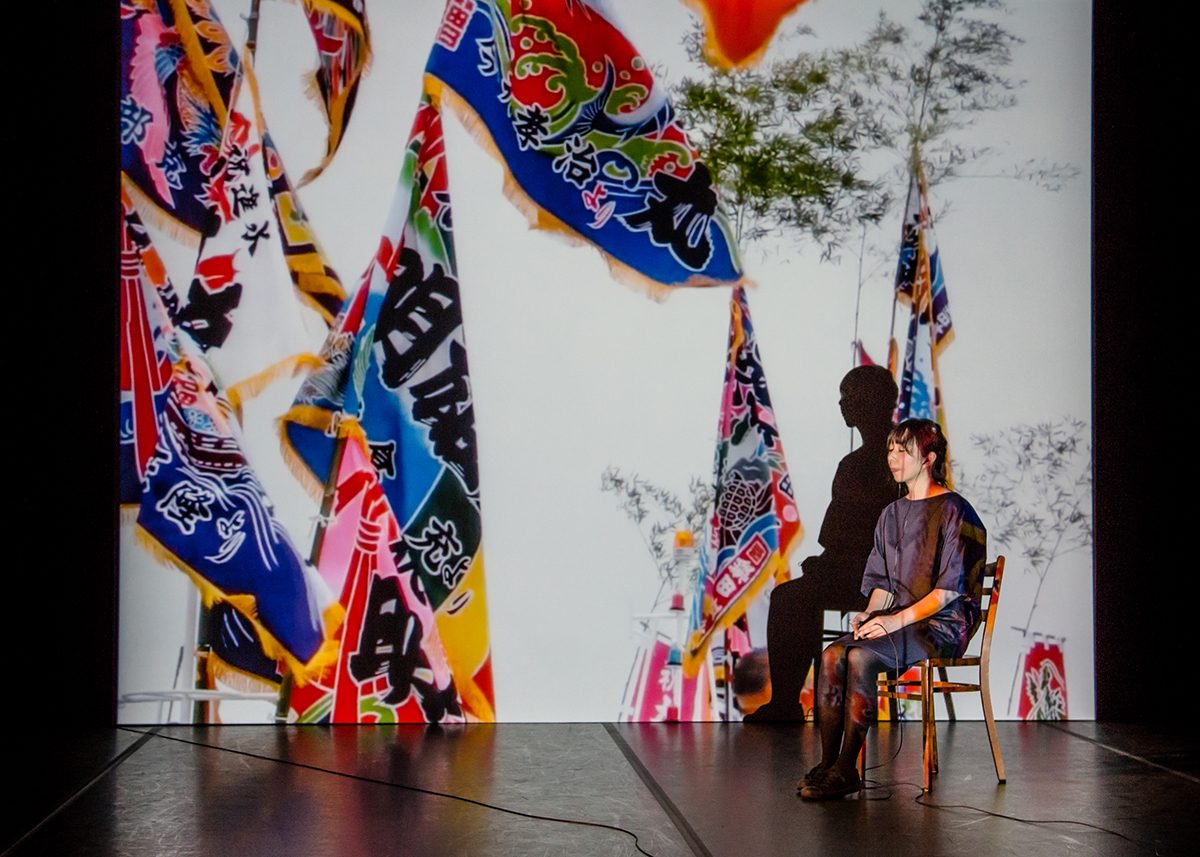American popular culture is a beast that eats itself. At some point late last century its orgy of self-celebration and self-flagellation grew so extravagant that the distinction between the two became nigh impossible to distinguish, and its global encroachment left it increasingly hard to find any position from which to secure what was once, perhaps naively, dubbed a critical perspective. It’s not surprising that Bristol-based provocateurs Action Hero (Gemma Paintin and James Stenhouse) has fallen into a giddy romance with Americana, but sometimes the object of their attention dances a few steps ahead of them.
Action Hero recently enjoyed a residency at Melbourne’s Arts House, presenting a suite of works that each engage with a different corner of US pop iconography. The first, Hoke’s Bluff, channels the tradition of high school sports movies with all of the accompanying clichés of adversity and triumph, team spirit and individual troubles. There’s a thin narrative in which a young sports star must overcome the internalised grief that causes him to choke up at pivotal points during the game, but more prominent are the reminders that this is an ur-narrative that is common across countless tellings. The sport in question keeps shifting and long periods are spent listing fictional gameplays and everytowns that may or may not exist. Characters are types. Story comes pre-ordained. When there are laughs — on the night I attended, there were many — they’re of the variety that stems from familiarity. We’ve seen all this before, again and again.
Hoke’s Bluff is not a dismantling of the sports movie. Somewhere along the way Action Hero has fallen under the spell of its target, and so what’s presented is an homage rather than parody. The challenge is that of three performers trying to match the pleasures provided by a multi-million dollar Hollywood machine, and rather than critique a contemporary myth from without or draw attention to its own internal pressures from within, the work reminds the viewer of the appeal of the thing itself while never able to be more than its faint echo. The effect is a bit like that of children wearing their parents’ clothes — funny but easily dismissed, and the ultimate reveal behind the protagonist’s trauma here is juvenile enough to take the whole work down a few notches.

Hoke’s Bluff, Action Hero, Arts House, photo Gregory Lorenzutti
But Action Hero elsewhere prove that they’re far from kids at play. Wrecking Ball takes cues from the celebrity photoshoot in which a jaded star tries to validate some sense of identity while a potentially sinister snapper maintains control of the shutter. The unfolding relationship between star and image-maker here rapidly spirals into a phantasmagoria of meta-theatrical mayhem.
The photographer and celebrity spout well-trodden clichés — she wants the shots to be her public reinvention, to reveal her real self, but the epistemological nuances of such an idea begin to render unstable the frame around the performance itself. The photographer’s camera becomes a weapon, carving off slices of its subject when she’s not ready — not real enough, or too real? — while her words start to chip away at his autonomy. Words themselves revolt when a script is passed out to the audience and props are revealed as such, so that the notion that there is anything real in any of this takes a battering.
The effect is unexpectedly unsettling. Not that this kind of meta-theatre is new — if anything, it’s a staple of Melbourne performance. But this work isn’t about pulling back the curtain on celebrity culture or the construction of public images or the artifice of theatre. Its self-deconstruction doesn’t leave behind a void but a chaotic fullness. Where Hoke’s Bluff offers little beyond its own patchwork of quotations and allusions, Wrecking Ball suggests that beneath the clichés of the popstar narrative are concerns that are terrifyingly universal, calling into question the existence of the self, the impermanence of the material world, our inability to stare too long at the blind screaming madness of the cosmos.
A pink icecream turns out to be mashed potato with a little food dye. By the end, it’s both at once, and this is an instance of Action Hero’s real genius in Wrecking Ball. Like an intellectual version of those optical illusions that leap between two states — a vase or two faces, for instance — the work is a range of things at once, yet the mind can only contemplate one at a time. It’s a rewarding and playful bit of trickery that keeps picking at the mind’s edges long afterwards.
–
Action Hero, Hoke’s Bluff, co-creators, writers, performers Gemma Paintin, James Stenhouse, co-deviser, performer Laura Dannequin, lighting design Jo Palmer, dramaturgy Deborah Pearson, additional text Nick Walker; Arts House, 24-27 May; Wrecking Ball, co-creators, writers, performers Gemma Paintin, James Stenhouse, lighting design Jo Palmer, dramaturgy Deborah Pearson; Arts House, Melbourne, 31 May – 3 June
Top image credit: Wrecking Ball, Action Hero, Arts House, photo courtesy the artists
Japanese theatre group chelfitsch for the past decade has advanced a distinctive form of low-key theatre, centred on the minutiae of everyday life as expressed through the bodily presence and vocalised phraseology of unassuming characters. Far from the heady heights of kabuki’s super-distilled hyper-graphic dramatic mechanics — frozen mie poses, choreographed fights, time-stretched logistics and musically mannered declamation — chelfitsch has consistently sought to observe how people behave in the everyday, and how an actor can embody and channel that observation. In the end, a similarly stylised mode of performance results, with actors extemporising infinitesimal tics and turns to frame a performance of how nobodies do nothing.
An invisible logic
Time’s Journey Through A Room (2016), a work about the impact of the earthquake and subsequent tsunami of March 2011, continues this approach wherein the actors perform with palpable restriction, moving to an invisible logic which delineates their physical presence, their vocal projection and their occupation of the stage. Three characters convene dramaturgically: a man, his new girlfriend and his recently deceased wife. Their interconnection is subtly and gradually revealed through a series of unfolded exchanges similar in tone to the cine-novels of Alain Robbe-Grillet. The trio simultaneously inhabit their past and present, as well as our conjoined present through their act of narration.
Yet, unlike Robbe-Grillet’s spatio-temporal mosaics which continually reassemble the fictive potentialities of a relationship (as in the ghostly memories dissected throughout Hiroshima Mon Amour [1959] and Last Year at Marienbad [1961]), Time’s Journey is anchored in the extended passage of grieving which grips the man, embodies the dead woman and hovers in front of his new girlfriend. He hardly speaks — the ghost vocalising over 80% of the play — and the new girlfriend functions as both book-ending chorus and an occasional device for allowing the man to open up to her and disclose the weight he bears grieving his deceased wife.
Sound design as quietude
All this could easily be handled by any of our state theatre companies — indeed grieving and mourning has become a millennial trope for ‘serious theatre’ and arthouse cinema desirous of respectability through dramaturgical depth. Mostly I find it tiresome and sappy. Conversely, chelfitsch’s theatre craft demonstrates an almost radical means by which one can handle such material deftly and delicately without resorting to heavy-handed humanism. Crucially, this is done through possibly the most overlooked signifying level in stagecraft: sound design. Now, many would aver that in a glutted epoch of international festivals trumpeting innovation in the live arts, we have abundant creative sound design in contemporary theatre. As my ears hear it, we don’t. We have a surfeit of cheap dark ambient texturing, boringly obvious pop song blasting and look-at-me audiovisual triggering, resulting from excess lighting and projection. How does cheltfitsch’s play avoid this, or provide an antidote to these clichéd modish options?
Firstly, Time’s Journey is an extremely quiet production. It employs soft vocal delivery as a key metric for balancing all other sound. The result is a contra-enunciated mode of theatrical staging. All sense of volume (and consequent spatialisation and dramatisation) is contained within and upon the stage. Counter to a legacy of modernist theatre craft which trades in pseudo-revolutionary wall-breaking and audience-assaulting, Time’s Journey resolutely remains on its stage, forcing the audience (key word here) to audit the action not as something entering the auditorium, but as something irrevocably tied to a zone beyond our grasp.
The symbolism seems clear to me: the story’s thematic drive centres on the new girlfriend straining to hear through the man’s silence to what he doesn’t say but which he hears continually — his deceased wife’s thoughts and voice. Typical of Japanese integrated holistic design (as opposed to European structured hierarchical design) the softness of sound simultaneously springs from the core impulse of theatre’s voicing of narrative onstage and spirals through a circular inversion of those mechanics to intensify their effect. If theatre is essentially about voicing a story, then Time’s Journey materially adheres to this formal stricture.
Secondly, an audiovisual space is grafted and grown like a mimetic ecosystem around the controlled vocal projections of the three actors. A range of lighting sources are distributed on and above the stage, creating a matrix of ‘hot spots’ where light is registered by action or appearance. Various lamps, lights or bulbs will occasionally come on slowly, or an ‘off-stage’ spot or an under-lit background scrim will illuminate an actor. The means for the lighting is unaffected and unshowy: all the stage props are low-level domestic objects (lights as well as a water hose, a pedestal fan, a rotating turntable) while the lighting design is rudimentary and conventional.
The lives of objects
But the point lies in the rhythm as these objects fade up and fade down, switch on or off, spring into motion or rest. True to Japanese synchronism, their presence constitutes a parallel Animist energy channel where objects breathe of their own accord, cycling through passages and moments which drift into and out of synch with what appears to be narrative direction. Never does the lighting stray into arch dramatic synchrony. Further, the objects’ accompanying sounds synchronise or don’t synchronise to these slow arcs and momentary pulsations of light. They create a sonic cartography of dramatic timing which sets up relations to the lighting, on one hand, and to the narrative action on the other. The transitions between these energy channels is elegant, like a breeze subtly moving a curtain (which actually occurs a few times too). Thus, the stage embodies a conjoined breathing which fuses with the breathing of the actors. Once one perceives this integrating momentum, one can then notice that even the actors’ movements across the stage (especially the man’s strange gestural catatonia with his back often facing the audience) are responsive to this audiovisual ecosystem which the stage articulates and enacts.
Thirdly, the audible sound design follows this spatial logic. Sound textures fade up and down in cycles or pulses, sometimes recognisable as atmospheres, other times readable as abstract tones. It could appear to be affected sound art until one acknowledges the purpose of these lowercase textures: they represent, and activate, the sounds present in a domestic space when speech is halted, repressed, drained. Air-conditioning hum, fridge buzz and TV screen whine are all evoked. Impressively, this aural catalogue returns the hyper-stylised sonics of late 90s onkyokei-related musics (from Otomo Yoshihide and Sachiko M to Toshimaru Nakamura and Ryoji Ikeda) to the originating electro-acoustic fields which inspired those musicians. It makes sense: if Japanese social interaction is based around a comparative reduction in vocalisation, sounds of the enclosing and surrounding spatial environments are bound to become extended, pregnant and foregrounded. Time’s Journey is a play which speaks to this human-environment interaction grounded in cultural specificity.
Trauma’s silence
Following through with an acknowledgement of the play’s Japanese context, Time’s Journey’s core strength resides in its grappling with various private and public approaches to grieving and mourning in the aftershocks of 3/11 Japan. Trauma ultimately silences people. They become catatonic, insular, repressed, incoherent, isolated. Their experience territorialises their separation from those who do not or did not share identical experiences. Many Japanese artists have grappled with the inability to voice perspective following 3/11, questioning the role of artists in such situations, and how artists if at all could reflect upon ongoing states of trauma. It’s a no-brainer to note the dual meaning of “aftershock,” applying equally to ground conditions following an earthquake and the mental disequilibrium suffered following a severe upset to an individual. In earthquakes and similar deafening moments of destruction, the silence that follows is always devastating, but only because it’s the first time maybe you become conscious of the non-sound that surrounded you every day before the destabilising event. Time’s Journey Through a Room threads those two zones together, deliberately stalling closure in order to retain the heightened sensations of feeling which attend trauma. The fact that the play acoustically achieves this is profound.
Watch a trailer (in Japanese) of Time’s Journey Through A Room:
Read John Bailey’s response to Time’s Journey Through A Room.
–
Asia TOPA Festival: chelfitsch, Time’s Journey Through a Room, writer, director Toshiki Okada, performers Izumi Aoyagi, Mari Ando, Yo Yoshida; Arts House, Melbourne, 9-12 Feb
Top image credit: Time’s Journey Through a Room, chelfitsch, AsiaTOPA, photo Bryony Jackson





